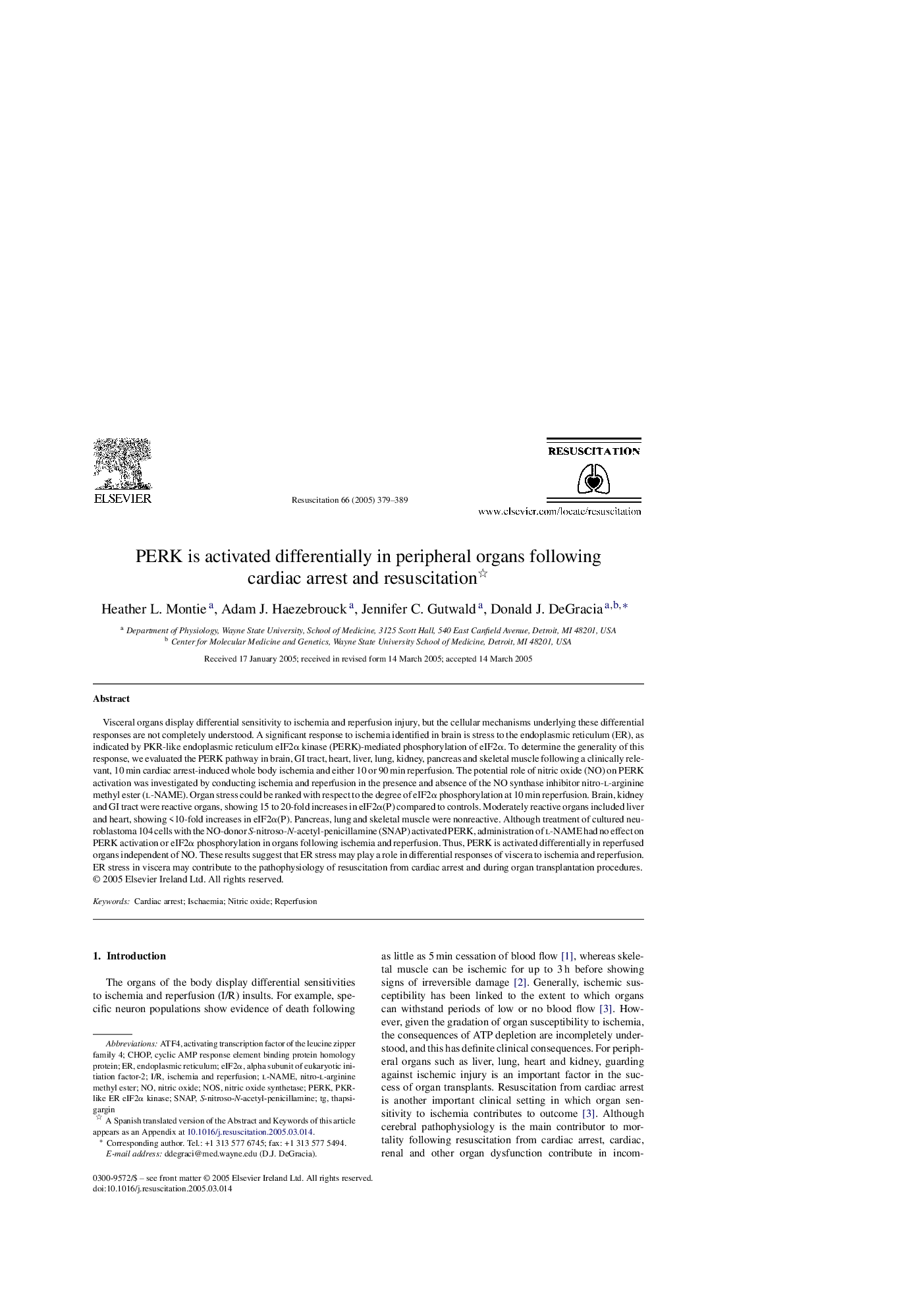| Article ID | Journal | Published Year | Pages | File Type |
|---|---|---|---|---|
| 9179933 | Resuscitation | 2005 | 11 Pages |
Abstract
Visceral organs display differential sensitivity to ischemia and reperfusion injury, but the cellular mechanisms underlying these differential responses are not completely understood. A significant response to ischemia identified in brain is stress to the endoplasmic reticulum (ER), as indicated by PKR-like endoplasmic reticulum eIF2α kinase (PERK)-mediated phosphorylation of eIF2α. To determine the generality of this response, we evaluated the PERK pathway in brain, GI tract, heart, liver, lung, kidney, pancreas and skeletal muscle following a clinically relevant, 10 min cardiac arrest-induced whole body ischemia and either 10 or 90 min reperfusion. The potential role of nitric oxide (NO) on PERK activation was investigated by conducting ischemia and reperfusion in the presence and absence of the NO synthase inhibitor nitro-l-arginine methyl ester (l-NAME). Organ stress could be ranked with respect to the degree of eIF2α phosphorylation at 10 min reperfusion. Brain, kidney and GI tract were reactive organs, showing 15 to 20-fold increases in eIF2α(P) compared to controls. Moderately reactive organs included liver and heart, showing <10-fold increases in eIF2α(P). Pancreas, lung and skeletal muscle were nonreactive. Although treatment of cultured neuroblastoma 104 cells with the NO-donor S-nitroso-N-acetyl-penicillamine (SNAP) activated PERK, administration of l-NAME had no effect on PERK activation or eIF2α phosphorylation in organs following ischemia and reperfusion. Thus, PERK is activated differentially in reperfused organs independent of NO. These results suggest that ER stress may play a role in differential responses of viscera to ischemia and reperfusion. ER stress in viscera may contribute to the pathophysiology of resuscitation from cardiac arrest and during organ transplantation procedures.
Keywords
Related Topics
Health Sciences
Medicine and Dentistry
Cardiology and Cardiovascular Medicine
Authors
Heather L. Montie, Adam J. Haezebrouck, Jennifer C. Gutwald, Donald J. DeGracia,
